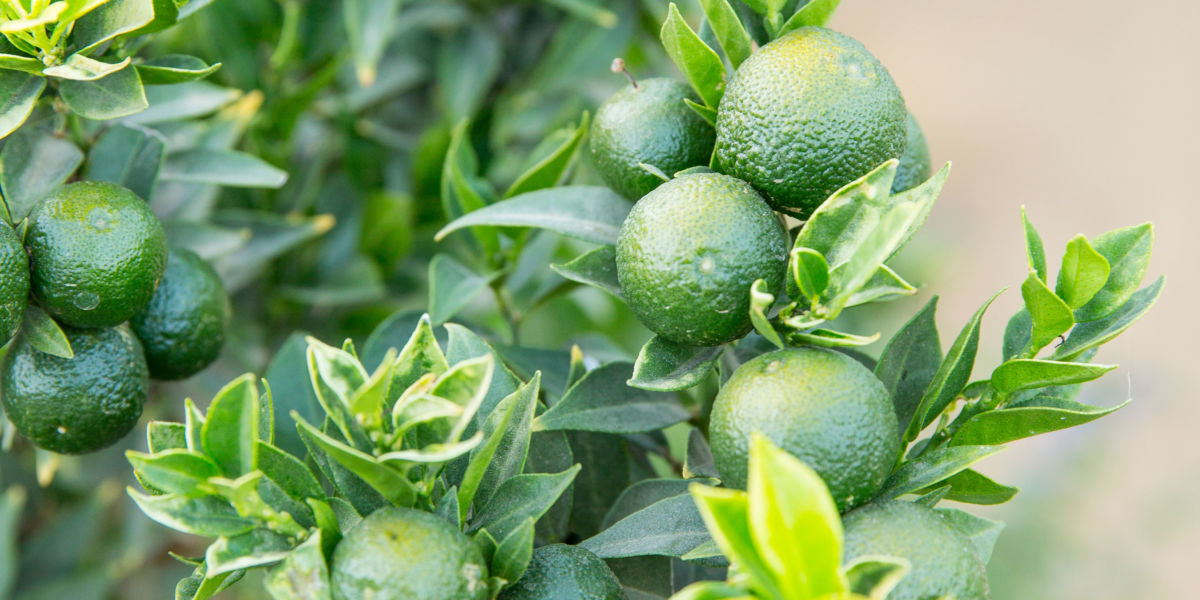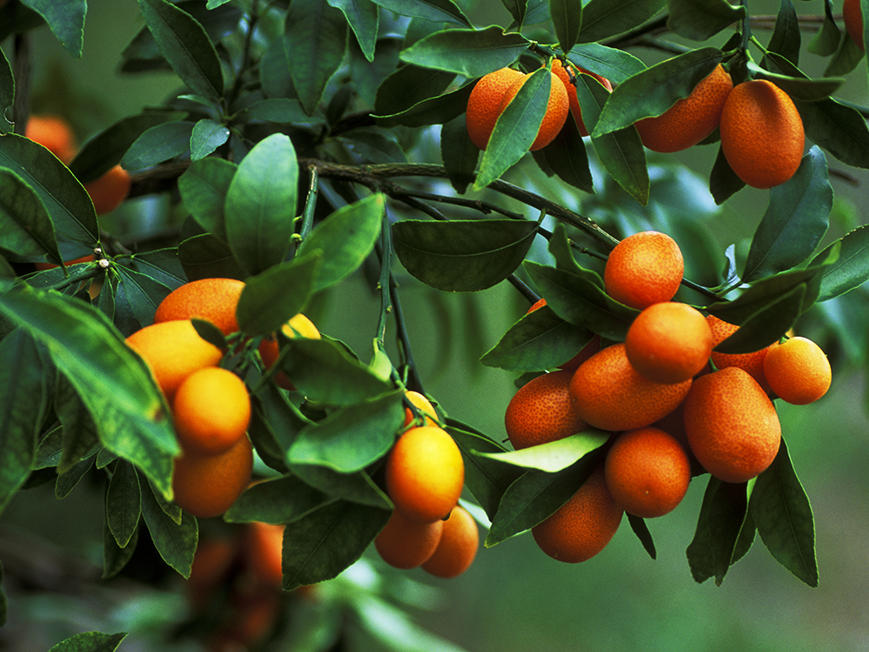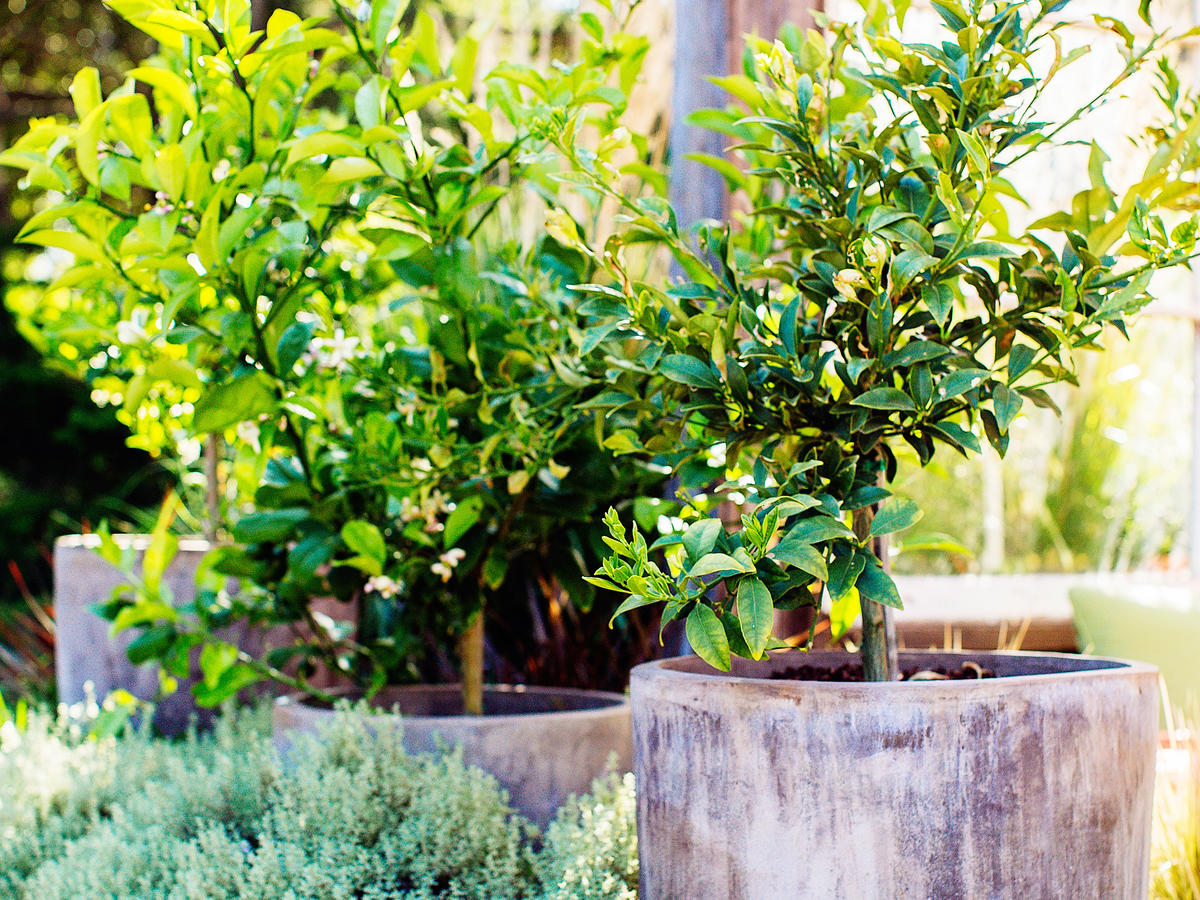
Our Guide to Growing Citrus in the Garden
’Tis the season to taste-test and choose the best variety for your yard.

Although in wintertime many plants are dormant and the days are drizzly, there’s one Test Garden chore that always cheers us up this time of year: harvesting citrus. With the season fast approaching—around mid-February in mild-winter regions—we’re sharing the tips and tricks we’ve learned from years of growing citrus (and dozens upon dozens of citrus recipes).
While there’s a variety for every climate or garden size (and even some you can grow indoors), we’re highlighting the more exotic types of citrus that have won us over. From finger limes to variegated kumquats, these fruits are both delicious to snack on and perfect in another winter antidote: cocktails.
Citrus Envy
Impress your friends and thrill your taste buds by growing these citrus varieties, recommended by Test Garden designer Stefani Bittner.- Australian Finger Lime: Known as the caviar or Pop Rocks of citrus, these finger-shaped fruits are filled with juicy capsules that erupt with flavor. Trees are thorny, so plant away from pathways.
- ‘Chinotto’ Sour Orange: Compact, with glossy myrtle-like leaves, this ornamental tree is elegant in any garden. Sour fruit will make you pucker, but its aromatic rinds are what’s missing from your cocktails.
- Variegated Kumquat: Striped, snack-size fruit ripens orange, but can be eaten skin and all for a juicy sour kick. Cream-tinged leaves are a winner in the landscape.
Winter Love
Growing citrus well typically requires a warm, frost-free climate—citrus trees are sensitive to frost and temperatures below 30°F. That said, some citrus, like yuzu, Jiouyuezao mandarin, and kumquat, are hardy to around 10°F. In colder regions, always plant in pots and wheel indoors for the winter. In milder climates with occasional frost, move potted citrus next to your house until the spring—reflective surfaces create a warm microclimate. To protect in-ground trees, be sure to deeply water (freezing soil will stress and suck moisture from roots) and cover with a frost blanket before a frigid forecast.Kumquats (Getty)
Best in the West
With a nod to lesser-known varieties, Aaron Dillon, vice president and general manager at Four Winds Growers, has a recommendation for every part of the West. (Order at fourwindsgrowers.com, our go-to source for growing citrus trees.)- Southern California: Australian finger lime, ‘Centennial’ variegated kumquat, ‘Seedless Kishu’ mandarin
- Northern California: Calamondin, ‘Gold Nugget’ seedless mandarin, ‘Rangpur’ sour acid mandarin
- The Southwest: ‘Fukushu’ kumquat, ‘Oroblanco’ grapefruit, ‘Trovita’ sweet orange
- The Northwest & Mountain Regions: ‘Flying Dragon’ trifoliate orange, Lime Leaf, yuzu
Your Citrus Care Guide
- Water deeply rather than frequently—young trees 2 to 3 times per week to get established, while mature trees need only a weekly soak.
- Prune citrus trees for shape around Valentine’s Day or after the last frost. Snip suckers growing below the rootstock at any time.
- Fertilize with an organic, slow-release granular fertilizer formulated for citrus in late winter or early spring, mid-summer, and early fall.
- Mulch with organic materials that decompose and provide nutrients—2 to 4 inches thick and 6 to 12 inches from trunk to prevent rot.
Thomas J. Story
Potted Solutions
Tight on space? Citrus grow happily in containers with drainage holes in a sunny, warm location in your garden or on a patio. Plant after Valentine’s Day or when the danger of frost has passed.- Cut out dead or broken roots and loosen rootball by scraping with a garden knife.
- Center tree inside container over a base of lightweight, well-draining potting soil. Avoid pots that are significantly larger than the rootball—excess soil space causes soggy conditions unfavorable to citrus.
- Fill in edges with potting soil, tamping as you go. Root crown should sit above soil level. Add a layer of mulch, stake if necessary, and water deeply.
Pest Alert!
Clusters of tiny brown insects that feed at a 45° angle are a telltale sign of Asian citrus psyllids. These pests transmit Huanglongbing, an incurable disease (also known as citrus greening) that causes green, bitter, and misshapen fruit and can eventually kill the tree outright. There’s some recent good news, though: Specially-trained dogs can sniff out the disease weeks to years before it hits plants. In a recent experiment, dogs were 95% accurate in finding the disease in a Texas grapefruit orchard.More Than a Twist

Jeffery Cross


